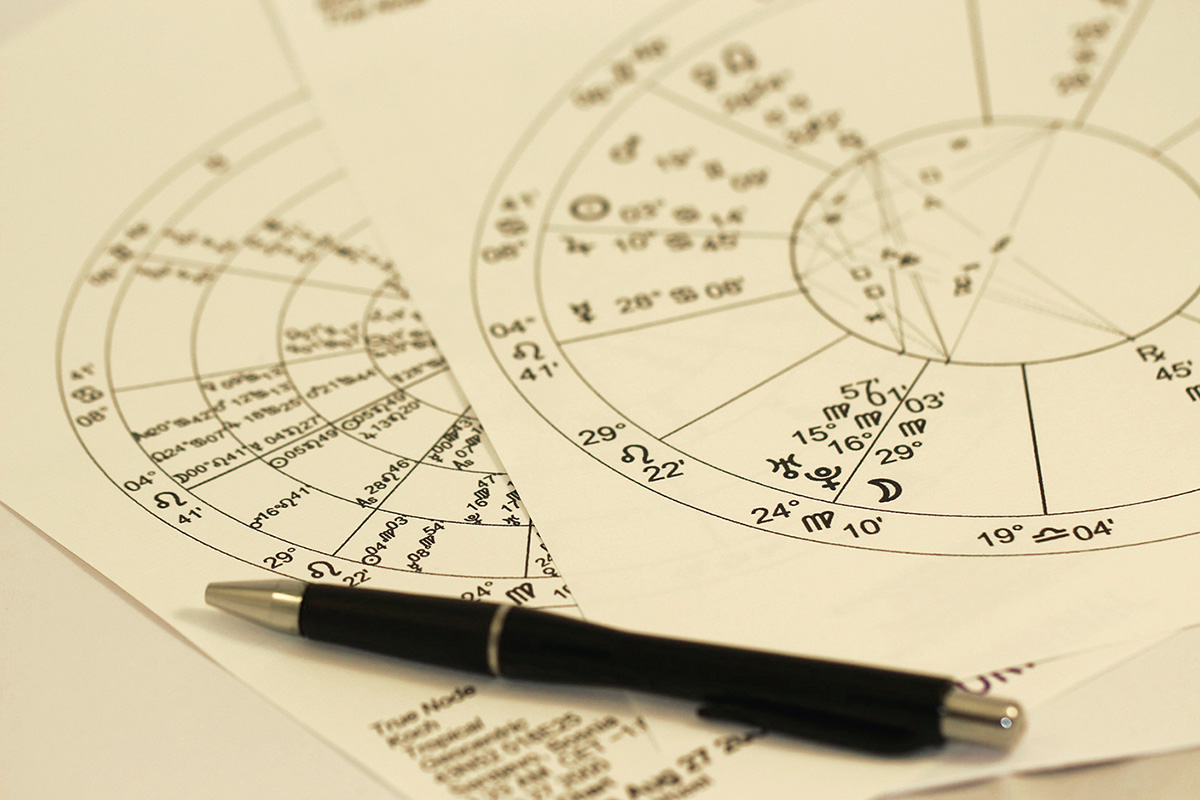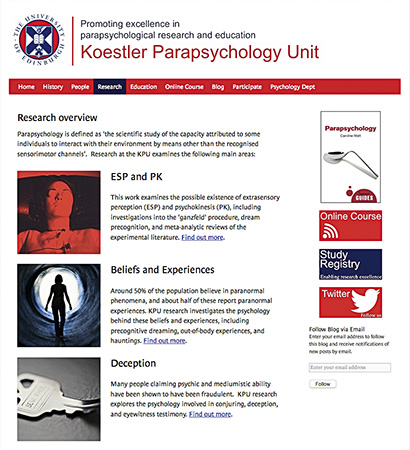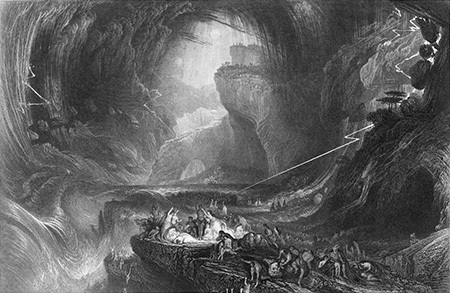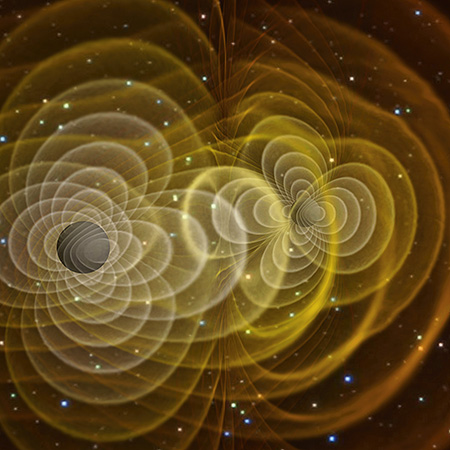From creationism to economics
How far should analyses of pseudoscience extend?

Both the scientific and philosophical problems with classic pseudosciences such as astrology and creationism are well known, leading to institutions that are not structured to promote cognitive advancement. A focus on institutions, however, also encourages recognition of gray areas, such as parapsychology, which combines scientifically dubious claims with institutions that are comparable to most social sciences in their structure. Furthermore, institutional approaches to pseudoscience also raise questions about some academically mainstream fields such as economics. In such cases, pseudoscientific aspects of practice are harder to identify, highlighting the need to place analyses of pseudoscience in a wider context of institutional pathologies.
Keywords: pseudoscience, institutions, creationism, parapsychology, economics.
Classic cases
We know what is wrong with the classic pseudosciences. If, for example, astrology is supposed to be more than an intriguing set of psychological metaphors, it does not work. According to the best of modern science, there is no plausible way for the planets to affect our personalities or the destinies of kingdoms in the way astrologers have imagined. When put to the proper tests, astrology does not reveal any signal beyond the noise. Moreover, it is hard to identify a consistent body of knowledge that can be called astrology. Critics encounter a shifting, often contradictory body of claims that share family resemblances and historical links, but which do not fit any narrative of progress or learning.
«Pseudosciences are typically protective and apologetic, rather than structured to advance learning»
Other classic pseudosciences often share little with astrology other than their rejection by mainstream science. Still, they can exhibit common pathologies. Homeopathy also contradicts established physical science, has largely failed controlled tests, and is embedded in an overall conception of nature that is outdated at best. Defenders of homeopathy, no less than astrologers, have to resort to ever-more inventive excuses to explain away failure.
This is not to say that philosophers of science have established solid demarcation criteria, or that there is much hope of constructing an eight-point checklist to reliably distinguish real from pretend science. Scientists themselves still like to accuse pseudosciences of being unfalsifiable. But while some astrologers may be remarkably adept at making excuses for failure, the claims of astrology have very often been found to be false. And it has been decades since philosophers have been tempted to make falsifiability a centerpiece of their understanding of science. Homeopathy would make most sense in a world that works according to magical correspondences rather than material mechanisms. But we cannot define science to exclude magic. If we did, homeopaths would rightly complain that science would blind itself to an important possibility for how the world might be structured. We do not have a «scientific method» with more substance than generalities that amount to saying that it is good to have some reality testing and that we regularly need to refine our understanding by subjecting claims to criticism. Pseudosciences fail to be science, but that is not because they do not conform to a set of rules that are etched in stone.
And yet, it remains important to distinguish between real science and the fake versions (Pigliucci & Boudry, 2013). Today, when patients spend many billions of dollars on alternative medicine, and when mainstream medical institutions increasingly adopt «complementary» medical practices, separating real science-based medicine from quackery is an important public concern. In the United States and many Muslim countries – even, to a lesser extent, in Europe – varieties of creationism remain very popular in conservative religious communities, resulting in considerable pressure on public science education (Blancke, Hjermitslev, & Kjaergaard, 2014; Edis, 2007). Even if our analysis has to be more complicated than consulting a set of pre-established criteria, we have to engage in debates to negotiate what kind of claims and what institutions we trust.
So, with anti-evolutionary views such as creationism or intelligent design, we argue, first and foremost, that evolution is far more successful as an explanation. If we are tempted to use the term pseudoscience for a set of claims, this is almost always because by current scientific standards these claims appear to fail, but a community of advocates persist in arguing that if done properly, science would acknowledge that they are correct. The first thing that is wrong about creationism is that it is bad science or «dead science» (Kitcher, 2007) – our geology is not shaped by Noah’s Flood, fossils are not hydrodynamically sorted, and evolutionary biologists are not concealing a crisis brought on by a lack of transitional forms. Some variants of a pseudoscience can raise interesting questions; when intelligent design first appeared as a more sophisticated form of creationism, there was some intellectual value in finding out exactly how it went wrong. But now, we know that intelligent design advocates’ attempts to establish a mathematically rigorous procedure to detect designs that cannot be achieved by mindless natural processes do not work (Young & Edis, 2004). Mainstream science is perfectly well equipped to consider challenges to evolution. The challenge, so far, has failed.
«Psychical research has a history of generating excuses such as the presence of skeptics and tighter controls psychically inhibiting psychic phenomena»
Critics who examine anti-evolution movements soon find that there is more to creationism than a stubborn attachment to a failed explanation. Creationists are rooted in religious communities, and operate within institutions that attempt to rival scientific institutions. The Institute for Creation Research or the Discovery Institute do not just provide desks for PhD’s who dissent from the current consensus. They are focal points for networks of alternative scholarship, public communication, and political action. Creationists can be very ingenious in excusing failure, arguing, for example, that radiometric dating cannot be trusted either because Noah’s Flood invalidates the assumption of constant decay rates, or because of whatever excuse is fashionable at the moment. Now, the specific claims made to defend flood geology are very likely false. But the institutions of creationism are structured to protect core creationist convictions from criticism. Creationists defend explicit supernatural interventions, coming into conflict with much of natural science. Their mistake, however, is not a violation of any rules that dictate methodological naturalism (Boudry, Blancke, & Braeckman, 2012). Instead, it is how they are not able to recognize the failures of their preferred approach. Creationist institutions are structured to help conservative religious people remain steadfast in their faith, and not to help them learn about how the world works.
«Critics of pseudoscience are often accused of conservatism: favoring established institutions and defending a rigid orthodoxy»
The label pseudoscience, then, does not just stand for scientific failure. Failure is common, and it is very much part of the processes of science. Properly used, pseudoscience applies to institutions more than ideas. Pseudosciences institutionalize intellectual pathologies, which systematically mislead their communities about the world. They are typically protective and apologetic, rather than structured to advance learning. Very often, pseudoscientific institutions are set apart from established scholarly and academic institutions, existing in parallel while harboring ambitions to supplant what they perceive as a corrupt mainstream.

Parapsychology has close links with conventional scientific organizations. To gain acceptance, some psychical researchers adopt formal research methods, form professional associations, and are even supported by academic institutions. For example, the Department of Psychology at Edinburgh University has had a research group in parapsychology since 1985. / Mètode
We do reasonably well in identifying parallel institutions and popular movements that are not structured to advance learning. In academic settings, we are usually well equipped to recognize the problems with everything from Holocaust denial to alien abductions. Moreover, we also have skeptic movements that act partly as a public extension of mainstream scientific institutions, partly as consumer protection advocates. Public persuasion is not always easy, since pseudoscientific institutions are often built around intuitively compelling ideas, while modern science has tended to draw a picture of our world that is fundamentally counterintuitive and harder to understand. Nonetheless, for those of us who prefer our public debates to be influenced by science rather than rival institutions, identifying pseudoscience is not often difficult. Doing something about it is another matter.
Gray areas
If accusations of pseudoscience are most meaningful in the context of institutions, we should, besides classic cases such as creationism, also find more ambiguous enterprises. For example, psychical research and parapsychology has long occupied a gray area at the boundaries of scientific respectability.
Claims of psychic powers do not fit well with what we have learned from natural science. Indeed, the very attraction of parapsychology is that it promises a revolution in our understanding of the world. As with many classic pseudosciences, parapsychology is closely associated with a magical, anti-materialist intellectual tradition; it is a dualist research program. However, aside from the conviction that materialist approaches to minds such as cognitive neuroscience are off the mark, there is little theoretical content to parapsychology. Indeed, a persistent criticism of parapsychology is that due to its lack of substantive theory, its alleged phenomena are negatively defined as violations of mainstream theoretical expectations. If clear, clean violations were to be observed – large effect sizes and repeatable phenomena – this negative definition would not be a significant obstacle. But the marginal, elusive consciousness-related anomalies claimed by experimental parapsychologists are not so easily interpretable as violations. Critics of parapsychology have long pointed out specific technical errors in parapsychological work, and have observed problems such as effect sizes that decline with tighter controls, general inconsistencies in reported effect sizes, methodological defects that range from very subtle concerns to insufficient safeguards against self-deception or fraud, a lack of replicability, and the failure to produce a clear record of cognitive progress after well over a century of investigation. All of this adds up to a research program that produces alleged signals that fail to rise above the noise expected from a complex experimental environment with innumerable and hard to control «small» sources of error that can masquerade as genuine anomalies (Edis, 2002).
If such criticism is correct, however, it would only mean that psychic powers are a failed hypothesis. Mainstream science is well-acquainted with long-running but unproductive research programs. String theory in physics, for example, has not been very fruitful yet, but it has few plausible rivals and is tightly linked to well-established theoretical approaches. Until recently, the effort to detect gravitational waves faced many difficulties due to extremely small effect sizes, though physicists had very precise expectations about the effects themselves. Parapsychology is more revolutionary with a far weaker theoretical basis and far less indirect empirical support. Its prospects for future success may well be judged to be dismal.

William Miller. The Deluge, 1844. Recorded for The imperial family bible (Blackie & Son, 1844). The development of excuses to justify failures is a common pathology in many pseudosciences. Some creationists, for example, argue that radiometric dating cannot be relied upon because the universal flood invalidates the hypothesis of constant decay rates. / Yale Center for British Art
But failure is normal in science. If critics suspect a pseudoscientific element in parapsychology, it must be because of institutional features that promote an unreasonable persistence with failure. For example, parapsychology shows many signs of indulging in excuse-making to avoid the consequences of failure. Psychical research has a history of generating excuses such as the presence of skeptics and tighter controls psychically inhibiting psychic phenomena. Moreover, many prominent parapsychologists explain their rejection by mainstream science as due to prejudice: the dominance of scientism and ideological commitments to materialism (Tart, 2009). As with the classic pseudosciences, such rhetoric is often a sign of intellectual insularity and retreat into a parallel institutional culture. Parapsychology is often associated with a quasi-religious New Age subculture, and its popular appeal far outstrips its scientific reputation.
And yet, parapsychology also has strong connections to mainstream scientific institutions. Historically, psychical research has attracted many scientists; even today, a prominent scientist or two will regularly become convinced that there is something to parapsychology, only for their arguments to be forgotten in the following decades. To become more acceptable to mainstream science, psychical researchers have attempted to become more rigorous, more formally experimental. Indeed, today the process of conducting experimental parapsychology is almost boringly mainstream. Researchers perform studies that are well-controlled by social-scientific standards, certainly to the extent that funding allows. They produce sophisticated statistical analyses and meta-analyses. They report their results in professional journals, employing the standard passive and style-free prose. And they complain about insufficient funding in meetings arranged by professional associations, all of which look very much like the institutions associated with other academic forms of inquiry.
Now, especially when judged by the standards of physical science, revolutionary claims that there are psychic powers or disembodied spirits or even just a certain class of consciousness-related anomalies still look like failures. But deep institutional pathologies are harder to identify. We know how to identify classic pseudosciences such as astrology or creationism, but parapsychology falls into a gray area. The widespread public fascination with psychic powers is not supported by mainstream science. But it is hard to say that parapsychology represents any threat to science education or enjoys undue influence on public policy.

Long and unproductive research programs are common in the scientific world. Until recently, the gravitational wave detection program faced many difficulties due to the extremely small scope of its effects. However, physicists had very precise expectations of the effects themselves, based on Einstein’s general theory of relativity. These would finally be confirmed with the gravitational wave detected by the LIGO observatory in September 2015. In the image, a simulation of two black holes merging made by NASA in 2008. / NASA
Pseudoscience in the main stream?
If pseudosciences are complicated, we should expect to find more gray areas – overlaps between intellectual and institutional pathologies and mainstream respectability. Indeed, a focus on institutional practices also raises the question of whether respectability carries too much weight. Critics of pseudoscience are often accused of conservatism: favoring established institutions and defending a rigid orthodoxy. We should also be able to ask whether respectable academic institutions are really structured to advance learning.
Accusations of pseudoscientific practice directed against mainstream enterprises, though uncommon, are not entirely unusual. Most fields of inquiry have controversial areas that inspire suspicions of systematic intellectual malpractice. In physics, for example, string theorists have been charged with indulging in unfalsifiability – of pursuing mathematically elegant theories without subjecting them to proper experimental constraints. In response, some philosophers have defended notions of «non-empirical theory confirmation», which has started a side controversy of its own (Dawid, 2013). But in any case, all physicists acknowledge that unconfirmed ideas such as string theory are not ready for introductory textbooks. The institutions of physics are hardly corrupt.
For more interesting targets, we might investigate less-mature sciences that are more susceptible to outside influences. For example, the currently dominant form of economics has regularly been accused of being a pseudoscience. Academic studies of economics obviously play an ideological as well as analytical role in modern societies, which reinforces suspicions that economic ideas sit uncomfortably close to political propaganda. And since the economics profession produces policy recommendations, its failures are both more consequential than those of classic pseudosciences and come under broader scrutiny.
Since the financial crises that started out the twenty-first century, public skepticism about economics has become more commonplace. Not only did mainstream economists largely fail to anticipate the crisis of 2008, but their dismal performance was linked to their reliance on elegant and complex mathematical models that nevertheless treated finance very naively in today’s financialized economies (Smith, 2010). Commitments to frictionless free markets in equilibrium overlay real economies that have been far from equilibrium and riddled with market failures. And while post-crisis critics of mainstream economics often concentrated on technical problems, some also accused the dominant current of the economics profession of pseudoscientific practices. For example, economic models depend on simplifying assumptions that are, in contrast to mature sciences such as physics, clearly not realistic. However, economics also has a supply of arguments to the effect that unrealistic oversimplifications do not matter. To a critic, this may look like the sort of excuse-making characteristic of pseudoscientific institutions (Keen, 2011).

Since the financial crises that started the twenty-first century, society’s skepticism about economics has become more commonplace. Some people accuse mainstream economics of pseudoscientific practices. In the image, citizens of Seattle (USA) protest in front of a bank. / Neil Parekh / SEIU Healthcare 775NW
The scientific status of economics is also a matter for regular debate among philosophers of economics and social scientists critical of the intellectual insularity of economics. At least one philosopher of science with a special interest in questions of pseudoscience has described neoclassical economics as a pseudoscience (Bunge, 2016). Partly in response to the criticism directed toward their profession, some economists have lately begun to describe their work as more like a craft than a science, primarily useful for specific policy decisions rather than more ambitious forms of explanation and prediction.
Nonetheless, it is not clear that economics is so similar to the classic pseudosciences. Today’s neoliberal economic doctrines are closely associated with political philosophies that exhibit overconfidence in their praise for the magic of the market and the wisdom of crowds (Mirowski, 2014). But this is not the kind of literal supernaturalism and purpose-infused perception of nature that is so common in the classic pseudosciences. Fantasies of endless growth run up against physical limitations, but that says very little about the accuracy of models with shorter horizons in time and space. Unlike the classic pseudosciences, which clash with very successful established theoretical frameworks in natural science, mainstream economics does not face any rival with comparable intellectual weight. Criticisms of mainstream ideas, even if accurate, have not yet been woven into a coherent alternative that can be shown to perform better.
Partly as a consequence, dissident economists have a far weaker institutional position than their mainstream colleagues. Orthodox economics enjoys all the trappings of institutional respectability: numbers, funding, and prestige. The journals, academic practices, and professional associations of economists are as well-established as it is possible to be. Dissidents, in contrast, are gathered in low-profile academic departments with little funding or influence. As a result, if there is any institutional critique of economics to be made, it cannot be too similar to that of the classic pseudosciences. If we use mainstream academic respectability as a proxy for a healthy intellectual enterprise, economics will be immune from criticism. But respectability alone does not answer the question of whether the institutions of economics are in fact structured to promote learning about how real economies function.
«The scientific status of economics is also a matter for regular debate among philosophers of economics and social scientists»
So, if we try to apply what we know from the classic pseudosciences to controversies over the status of economics, we find ourselves in another gray area. More important, examples such as economics reveal limitations in analyses of science and pseudoscience. Institutions are complex, and our experience with the classic pseudosciences produces an emphasis on a limited set of possible pathologies, such as generating excuses to avoid persistent failure. But if economics suffers from any institutional pathologies, these need not be those defects exhibited by beleaguered advocates of minority viewpoints rejected by the scientific mainstream. If economics has institutionalized some obstacles to cognitive progress, these are more likely due to its favored position and services to the already powerful. If economists have any similarity to astrologers, it will be to the court astrologers of old rather than the marginal New Age entrepreneurs of today.
We know what is wrong with the classic pseudosciences, but if diagnoses of pseudoscience are to be useful beyond the restricted set of such examples, more needs to be done. In particular, we still have much work to do to understand pseudoscience in a wider context of possible institutional failings. Without such an understanding, outside of conversations about paranormal beliefs, accusations of «pseudoscience» will risk becoming an empty rhetorical device. And without an acknowledgement of possible structural problems in mainstream academic institutions, critics of pseudoscience will indeed be exhibiting undue conservatism.
References
Blancke, S., Hjermitslev, H. H., & Kjaergaard, P. C. (Eds.). (2014). Creationism in Europe. Baltimore, MD: Johns Hopkins University Press.
Boudry, M., Blancke, S., & Braeckman, J. (2012). Grist to the mill of anti-evolutionism: The failed strategy of ruling the supernatural out of science by philosophical fiat. Science & Education, 21(8), 1151–1165. doi: 10.1007/s11191-012-9446-8
Bunge, M. (2016). Between two worlds: Memoirs of a philosopher-scientist. Cham: Springer International.
Dawid, R. (2013). String theory and the scientific method. Cambridge: Cambridge University Press.
Edis, T. (2002). The ghost in the universe: God in light of modern science. Amherst, NY: Prometheus Books.
Edis, T. (2007). An illusion of harmony: Science and religion in Islam. Amherst, NY: Prometheus Books.
Keen, S. (2011). Debunking economics: The naked emperor dethroned? London/New York: Zed Books.
Kitcher, P. (2007). Living with Darwin: Evolution, design, and the future of faith. New York, NY: Oxford University Press.
Mirowski, P. (2014). Never let a serious crisis go to waste: How neoliberalism survived the financial meltdown. London: Verso.
Pigliucci, M., & Boudry, M. (Eds.). (2013). Philosophy of pseudoscience: Reconsidering the demarcation problem. Chicago, IL: The University of Chicago Press.
Smith, Y. (2010). ECONned: How unenlightened self interest undermined democracy and corrupted capitalism. New York, NY: Palgrave Macmillan.
Tart, C. T. (2009). The end of materialism: How evidence of the paranormal is bringing science and spirit together. Oakland, CA: New Harbinger Publications.
Young, M., & Edis, T. (Eds.). (2004). Why intelligent design fails: A scientific critique of the new creationism. New Brunswick, NJ: Rutgers University Press.





